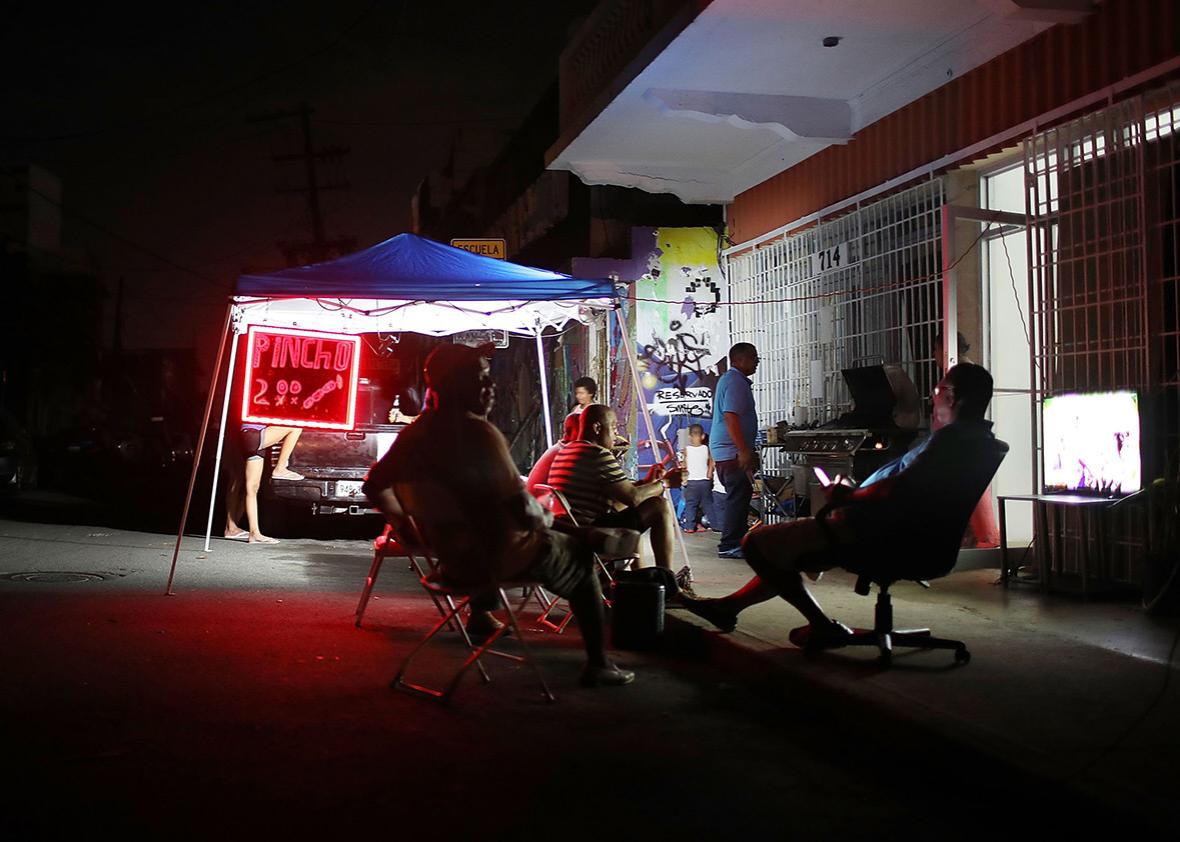Last week, I wrote a story for Slate about Hurricane Maria’s sole silver lining: In the wake of unprecedented destruction, Puerto Rico actually has a unique opportunity to build a better, greener grid. On Thursday, Elon “Batteries Suck” Musk stepped in to suggest, over Twitter, that he (and his companies Tesla and SolarCity) could be the one to do the heavy lifting for the ravaged island territory. The governor of Puerto Rico, Ricardo Rosselló, soon tweeted back to say, “Let’s talk.”
This is not what I had in mind. Musk’s day-old plan for Puerto Rico is underdeveloped, to say the least, but the billionaire’s past projects in energy infrastructure could point the way. Back in 2016, Musk installed a microgrid on the island of Ta’u in American Samoa. Up until November of that year, the island had run primarily on diesel shipped in from the mainland. So Musk stepped in to install more than 5,000 solar panels and 60 Tesla Powerpacks for storage, as the Verge reported at the time. It was primarily funded by American Samoa and federal agencies like the Department of the Interior.
Things appear to be smooth sailing in SolarCity Samoa. But there’s reasons to be wary of how Musk’s vision could be applied to Puerto Rico. First, there’s the strictly practical matter that the territory of Puerto Rico is substantially larger than any other project Musk has worked on before. Ta’u has less than 1,000 residents, while Puerto Rico has 3.5 million. Rebuilding the Caribbean island would require Musk to scale his past efforts by a factor of, er, 6,000—and do it fast. Also, Ta’u’s infrastructure clearly wasn’t perfect (that’s why it needed SolarCity in the first place), but at least it was functioning when Musk’s team arrived. Puerto Rico, by contrast, is completely crippled by Hurricane Maria. Even after a few weeks of “recovery,” only 10 percent of the island has power. Yes, that absolute devastation could allow for a vibrant Tesla-powered rebirth, but it raises the stakes much, much higher.
There’s also a dark fact of history that makes Puerto Rico’s situation a little different. The island has long been a laboratory for the ideas of those living in the continental United States, as others have pointed out. In the 1950s, scientists tested early versions of the birth control pill on Puerto Rican women living in a public housing project. The Washington Post recently reported on the ethical quandary the trials presented:
The theories as to why Puerto Rico was chosen as a testing ground, despite its heavily Catholic population, are multiple: It was an easy flight from the U.S. mainland. There were no laws there against birth control. And the location’s overcrowding and poverty made it especially attractive to biologist Gregory Pincus [he oversaw the trial], who was concerned about global population control.
This checkered past colors current endeavors of this nature, which is probably why, as Musk himself pointed out in his 280-character tweet, any important developments on the island must truly be led by the Puerto Rican people.
Then there’s the larger picture to consider. Corporations have done and continue to do good work that benefits society. And the government, conversely, has and continues to do bad work that damages its citizens. But we should still maintain a healthy skepticism of branded rebuilding, especially when people are still in shock after a disaster the size of Hurricane Maria. As dozens of companies promote themselves as integral parts of the recovery from a summer full of storms, it’s important to look back at the response to the most physically powerful tempest of all: Hurricane Katrina. Back in 2005, just weeks after the storm devastated New Orleans, the Corporate Research Project published an insightful account of how “a disastrous act of God for many was a godsend for the world’s largest corporation.”
In that case, it was Walmart, a company suffering a public relations crisis following class-action lawsuits for gender discrimination, ignoring overtime pay laws. By publicizing a hefty donation to the disaster relief effort and not firing displaced employees, the company’s sales went up and press coverage was, at least for a moment, rapturous. But, as Philip Mattera wrote:
Looked at in a broader context, the hurricane relief efforts of Wal-Mart, while mostly laudable, come across as somewhat less than heroic. The relatively ordinary accomplishments of the company looked extraordinary only because of the spectacular failures of government officials. Just because political hacks such as Michael Brown could not get the job done does not mean that big business is the solution to all our problems.
And that’s still true today. But perhaps the most disturbing part of the response to Hurricane Maria’s effect on Puerto Rico is that the federal government’s help in recovery is not guaranteed. There’s no evidence that the feds are interested in funding their own large-scale public recovery projects. There’s also no reason to believe the federal government will subsidize Musk’s private efforts, as it did with Ta’u. And, most alarmingly, there’s nothing to suggest that the White House intends to enforce proper oversight over any aspect of the rebuilding at all.
